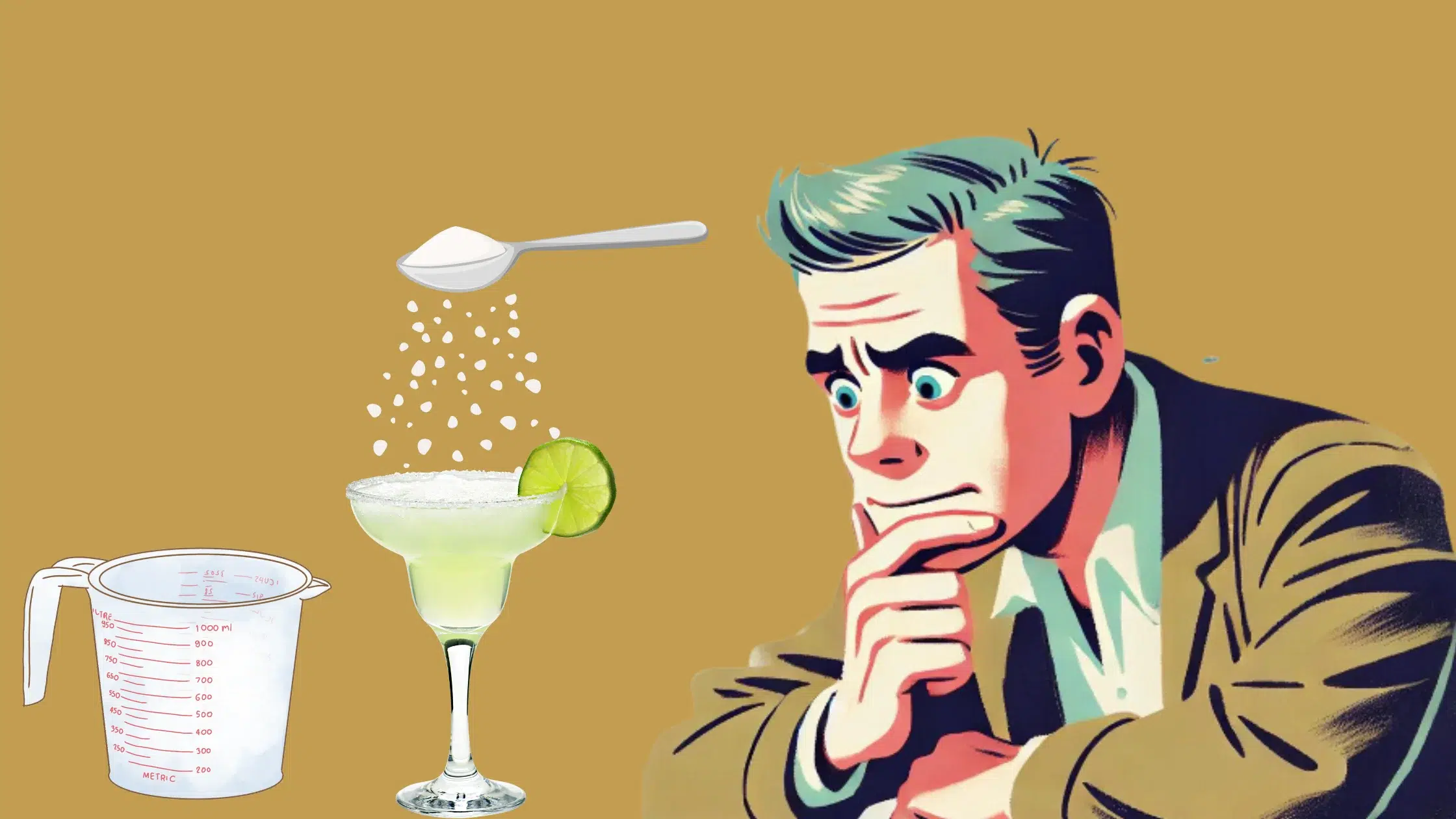Creating the perfect cocktail isn’t just about selecting the right ingredients—it’s about getting the measurements spot-on. Accurate measurement is key to achieving the perfect balance of flavors, ensuring your drink is both consistent and delicious every time. This guide will show you how to precisely measure your cocktail ingredients, whether you’re using jiggers, measuring spoons, or other tools.
By mastering these techniques, you’ll be able to craft cocktails that not only taste great but also impress with their consistency and refinement.
Let’s dive into the art and science of measuring for the perfect mix!
What is accurate measurement in cocktail making
Accurate measurement in cocktail making is the cornerstone of creating drinks that not only taste exceptional but are also consistent in quality and flavor. It involves the precise quantification of each ingredient, ensuring that every component is added in the right proportion. This precision is crucial, as even slight deviations can significantly alter a cocktail’s taste and character.
The art of accurate measurement transcends mere guesswork, relying instead on specific tools designed to deliver exact amounts of liquid or solid ingredients. These tools, such as jiggers and measuring spoons, are fundamental for both replicating classic cocktails and innovating new recipes. By adhering to accurate measurements, mixologists can craft beverages that meet the highest standards of balance and refinement, thereby enhancing the overall drinking experience.
Why accurate measurement is crucial
Accurate measurement is crucial in cocktail making for several key reasons. Firstly, it ensures balanced flavors, which is essential for the drink to taste as intended. Even minor inaccuracies can disrupt the harmony of flavors, leading to a cocktail that may be too sweet, too sour, or overly strong.
Secondly, accurate measurement guarantees consistency across every serving. This consistency is vital for both professional establishments and home bartenders who aim to deliver the same quality and taste experience with every drink. Lastly, it prevents waste by ensuring that each ingredient is used efficiently, avoiding the excess or shortfall that can occur with imprecise measurements.
Together, these factors underscore the importance of accurate measurement as the foundation of skilled cocktail crafting, highlighting its role in achieving perfection in every glass.
Ensures balanced flavors
Accurate measurement is pivotal in maintaining the balance of flavors within a cocktail. Each ingredient plays a specific role, contributing to the overall taste profile. By measuring ingredients accurately, mixologists ensure that no single flavor overpowers the others, achieving a harmonious blend that delights the palate.
Guarantees consistency
Consistency is a hallmark of great cocktail making. Through precise measurement, bartenders can replicate the same delicious results with every drink, ensuring a consistent experience for patrons. This reliability builds trust and satisfaction, encouraging repeat visits and positive word of mouth.
Prevents waste
Precise measurement prevents waste, a crucial aspect in both home and professional settings. By using the exact amounts required, there’s minimal excess of expensive spirits and mixers. This efficiency not only saves money but also respects the ingredients, promoting a sustainable approach to cocktail preparation.
Essential tools for precise measurements
For the craft of cocktail making, having the right tools is non-negotiable. Essential to this arsenal are jiggers, measuring spoons, and graduated cylinders, each serving a unique purpose in the pursuit of precision. Jiggers, with their dual-sided design, offer the most common measurements needed for cocktails, typically 1 oz and 1.5 oz, but also come in various sizes for versatility.
Japanese jiggers, noted for their elongated shape, provide an added level of precision, making them a favorite among meticulous mixologists. For smaller quantities that demand exactness, measuring spoons step in, offering teaspoon and tablespoon measurements crucial for adding syrups, bitters, or other flavorings. When preparing large batches or when utmost accuracy is required, graduated cylinders come into play, allowing for measurements in milliliters to ensure not a drop is out of place.
Together, these tools form the backbone of precision in cocktail crafting, ensuring each ingredient’s volume is perfectly measured to achieve the desired balance and flavor profile. The precision of a Japanese jigger can make a significant difference in a delicate cocktail like a Martini, where exact alcohol to vermouth ratio is key. Similarly, graduated cylinders are essential for large batch cocktails, ensuring consistency across servings.
| Tool | Common Measurements | Ideal for Cocktail | Purpose & Benefit |
|---|---|---|---|
| Standard Double-Sided Jigger | 1 oz and 1.5 oz | Old Fashioned, Margarita | Ensures the fundamental measurements for most cocktails, providing a balance of flavors. |
| Japanese Jigger | Various, more precise | Martini, Manhattan | Offers elongated shape for precise measurements, crucial for cocktails requiring exact alcohol ratios. |
| Measuring Spoons | Teaspoon and Tablespoon | Sours, Mojitos | Perfect for adding syrups, bitters, or juices in smaller quantities, fine-tuning the cocktail’s flavor. |
| Graduated Cylinders | Milliliters | Large Batch Cocktails | Essential for preparing large quantities, ensuring consistency and accuracy in every pour. |
Using a jigger effectively
Mastering the use of a jigger is fundamental for any mixologist aiming to craft cocktails with precision and consistency. The key to using a jigger effectively lies in understanding its design and the technique required for accurate pours. Filling the jigger to the brim ensures a full measure, while for half measurements, filling it to halfway marks the spot accurately.
This method guarantees that each ingredient is measured with precision, contributing to the overall balance and flavor of the cocktail. Adopting this practice not only enhances the quality of the drinks but also elevates the mixologist’s skill in achieving the perfect blend of ingredients every time.
Fill to the brim for full measure
For a full measure using a jigger, the technique is straightforward: fill it to the brim. This ensures that you’re getting the exact amount specified in the cocktail recipe, crucial for maintaining the intended flavor profile and strength of the drink. This method leaves no room for guesswork, providing a reliable and consistent measure every time.
For half measurements, fill to halfway
When a recipe calls for a half measure, the approach is equally precise: fill the jigger to halfway. This method requires a bit of visual estimation but is essential for achieving the correct proportion of ingredients. It’s particularly useful for ingredients that can overpower a cocktail if used too liberally, ensuring the final drink is balanced and enjoyable.
To further enhance this section, consider incorporating step-by-step guides with accompanying video links that demonstrate the technique for using a jigger correctly. These resources could visually guide readers through the process of measuring both full and half measures accurately, reinforcing the textual instructions provided and offering a practical, hands-on learning tool. This approach would ensure readers not only understand the concepts in theory but also in practice, making it easier to master the art of using a jigger effectively in cocktail crafting.
Measuring small quantities accurately
Accurately measuring small quantities, such as dashes and drops, is vital in cocktail crafting, significantly impacting the drink’s final taste and quality. For ingredients that have a strong impact in small amounts, like bitters or essential oils, precision is key. Utilizing tools like droppers or employing techniques with the back of a spoon ensures that each addition enhances the cocktail without overwhelming other flavors.
This precision allows mixologists to fine-tune their drinks, achieving a level of complexity and depth that distinguishes good cocktails from great ones.
Technique for measuring dashes
The technique for measuring dashes involves a careful and controlled pour, typically using a bottle with a dasher top. A dash can be considered roughly equivalent to 1/8 teaspoon. This method is particularly important for ingredients like bitters, where precision is key to the cocktail’s balance.
Incorporating visual aids or diagrams could significantly enhance understanding, showing exactly how to achieve an accurate dash. For example, visualizing the correct pour technique for a Manhattan cocktail could illustrate the profound impact that the precise measurement of bitters has on the drink’s overall flavor profile.
Tips for precision
Achieving precision in cocktail making is an art that requires attention to detail and the right techniques. Expert advice from renowned mixologists emphasizes the importance of precision in cocktail making. They share their personal tips for achieving it, including measuring ingredients at eye level to ensure accurate readings, using the right tool for each type of ingredient, and understanding the differences between liquid and solid measurements.
For liquids, tools like jiggers and graduated cylinders provide the accuracy needed, while for solids or more granular ingredients, spoons and leveling off with a knife ensure the correct amount is used. Furthermore, being mindful of the temperature of ingredients is crucial, as it can affect volume and, consequently, the balance of flavors in a cocktail. Renowned mixologist, Alex Day, notes, “Precision isn’t just about the right amount; it’s about the right condition of your ingredients.
Temperature plays a huge role in how your cocktails turn out.” By following these guidelines, mixologists can refine their craft, producing consistently high-quality cocktails with the precision that fine drinking experiences demand.
Measure ingredients at eye level
Measuring ingredients at eye level is crucial for accuracy, especially when using liquid measuring tools like jiggers or graduated cylinders. This technique ensures that the meniscus, the slight curve at the liquid’s surface, is at the correct measurement line, providing a precise and consistent measure every time. Celebrated bartender, Julie Reiner, advises, “Always bring your measure to eye level.
It’s a simple step that ensures you’re not over or under-pouring.”
Use the right tool for the ingredient
Selecting the right tool for the ingredient is essential for precision in cocktail making. Liquid ingredients require jiggers or graduated cylinders for accurate volume measurement, while solid or granular ingredients, such as sugar or salt, are best measured using spoons or scales. This distinction ensures that each component is measured accurately, contributing to the cocktail’s intended flavor profile.
Jim Meehan, a pioneer in the craft cocktail movement, emphasizes, “The right tool for the right ingredient is not just about precision; it’s about respecting the craft and the ingredients.”
Liquid vs. solid ingredients
Understanding the difference in measuring liquid vs. solid ingredients is key to precision. Liquids are measured by volume, requiring tools that account for the fluid nature of these ingredients.
Solids, however, may be measured by volume or weight, with some recipes specifying one for accuracy. This differentiation is crucial for achieving the correct balance of flavors in a cocktail, as the measurement method can significantly impact the outcome. World-renowned mixologist, Tony Conigliaro, suggests, “Familiarize yourself with both volume and weight measurements.
It will elevate your cocktail game to new heights.”
Avoiding common measuring mistakes
To ensure the creation of impeccable cocktails, it’s essential to avoid common measuring mistakes that can compromise the drink’s quality. Here are some pitfalls to watch out for, along with strategies to maintain the integrity of your creations:
Estimating instead of measuring
Relying on estimation rather than precise measurement can lead to significant variations in cocktail quality. For example, an estimated pour might result in a Manhattan that’s too strong or a Mojito that’s overly sweet, detracting from the intended experience. Always use a jigger or measuring spoon to ensure accuracy.
Not leveling off dry ingredients
Not leveling off dry ingredients when using measuring spoons is a common oversight that can result in using more of an ingredient than the recipe calls for, affecting the cocktail’s flavor and consistency. For instance, an extra quarter teaspoon of sugar in a Whiskey Sour can shift the balance from perfectly harmonious to noticeably sweet.
Use a knife to level for accuracy
To ensure accuracy when measuring dry ingredients, use the flat edge of a knife to level off the excess. This technique is particularly crucial for ingredients like salt or sugar in cocktails where precision is key to achieving the desired taste profile and strength.
Ignoring temperature effects on volume
Ignoring the temperature of ingredients when measuring can introduce errors. For example, cold liquids can contract, and warm liquids can expand, affecting their volume and, consequently, the balance of flavors in a cocktail. A cold syrup might pour more slowly, leading to under-sweetening a drink like an Old Fashioned.
Liquids expand or contract with temperature changes
Understanding that liquids expand or contract with temperature changes is crucial. For consistency, ingredients should be measured at a standard temperature, ensuring that the ratios remain consistent, preserving the cocktail’s intended character and quality. This attention to detail is what separates a good cocktail from a great one.





